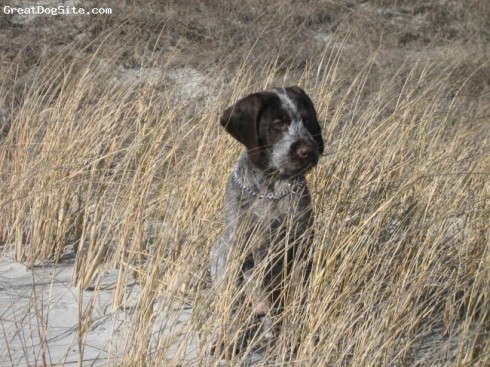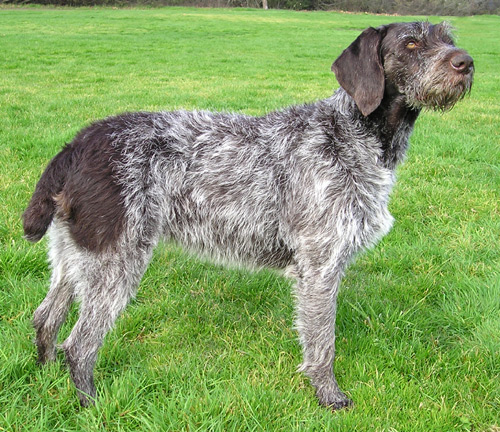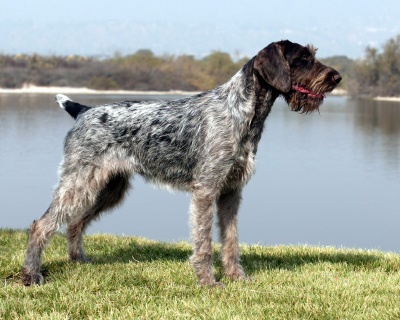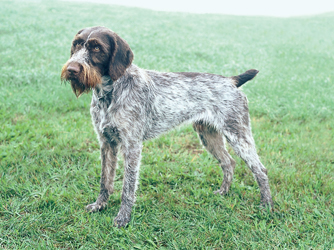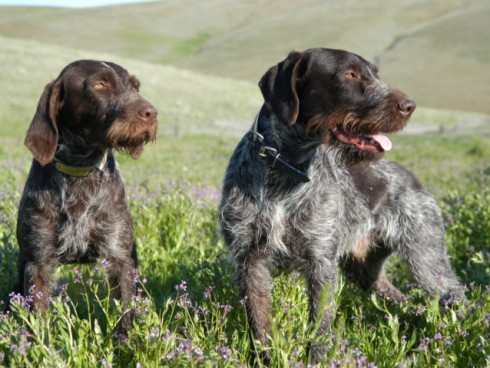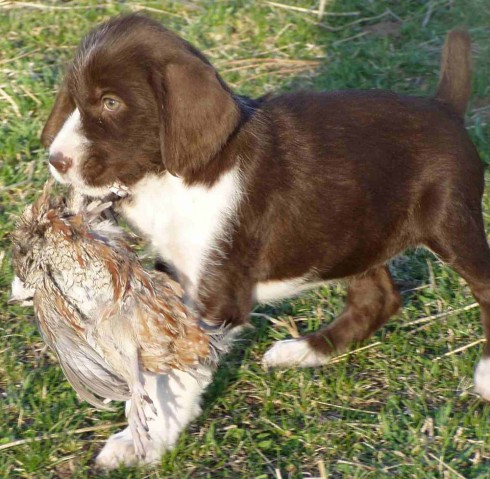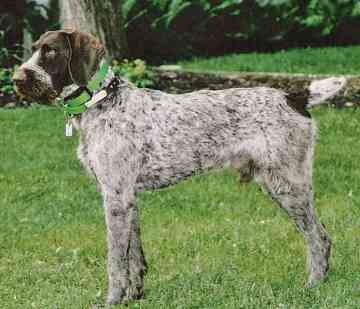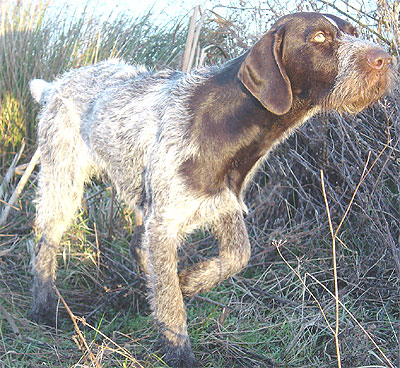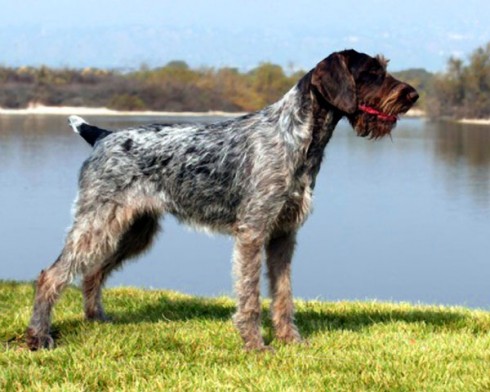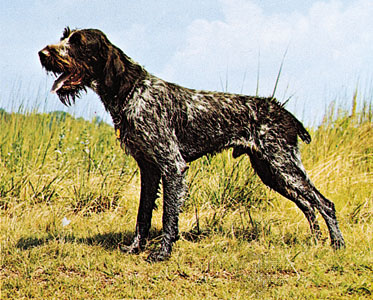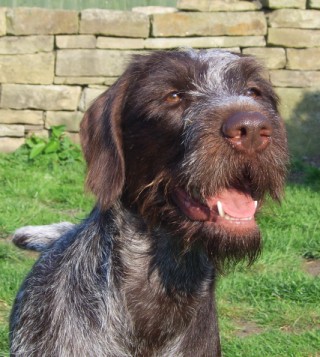Main Index
In Store
Our Web Store
Miniature Schnauzer Picture Gallery
Latest Dog Blogs
- What Are The Basic Commands To Train A Dog?
- PaySafe As The Most Popular Type Of Deposit
- Everything You Need To Know About Pet Sales
- Dogs Contribute To Our Physical And Mental Well Being
- How To Choose Where To Bet On Greyhounds In 2022
- Volunteer With Animals - How To Help Dogs Around The World
- Basic Understanding Of The House Edge
- Why You Should Get A Dog
- Top 20 Popular Dog Names Around The World
- Constipation in Dogs and How to Find Solutions
German Wirehaired Pointer
German Wirehaired Pointer Picture Gallery
German Wirehaired Pointer Breeders
German Wirehaired Pointer Clubs/Associations
The Full German Wirehaired Pointer Description
The German Wirehaired Pointer shares many qualities of the German Shorthaired Pointer, while still having his own definite identity. His coat sets him apart of the German Shorthaired. A perfect all-weather covering, it consists of an outer coat that is straight, harsh, and wiry. It lies flat and is largely water repellent.
Did you know?
The coat is weather-resisting in every sense of the term, and it is to large extent water-repellent. It is straight, harsh, wiry, and quite flat-lying. One and one half to two inches in length, it is long enough to shield the body from rough cover, yet not so long as to hide the outline.
Most of the early wirehaired Pointers represented a combination of Griffon, Stichelhaar, Pudelpointer, and German Shorthair. The Pudelpointer was a cross between a Poodle dog and an English Pointer bitch, while the Griffon and the Stichelhaar were composed of Pointer, Foxhound, Pudelpointer, and a Polish Water dog. Thus it is easy to appreciate the different hunting skills incorporated in the wirehaired Pointers of a century or more ago.
So you want to own a German Wirehaired Pointer?
By the nature of their breeding these dogs need a lot of exercise, but they will adapt to a small yard or long walks.
German Wirehaired Pointers are very affectionate dogs, although they may be aloof with strangers, they are devoted and somewhat protective of their families and especially enjoy children.
Indicative Breed Standard
General Appearance
Medium-sized hunting dog, with wire hair completely covering skin. Overall should be slightly longer in body, compared to shoulder height.
Characteristics
Powerful, strong, versatile hunting dog, excels in both field and water. Loyal, intelligent, sound temperament and alert.
Temperament
Gentle, affectionate and even tempered. Alert, biddable and very loyal.
Head and Skull
Balanced in proportion to body. Skull sufficiently broad and slightly rounded. Moderate stop, skull and muzzle of equal length with no overhanging lips. Nose liver or black.
Eyes
Medium-sized oval, hazel or darker, with eyelids closing properly, not protruding nor too deep-set.
Ears
Medium-sized in relation to head, set high, when brought forward should reach corner of lips.
Mouth
Teeth and jaws strong, with perfect regular and complete scissor bite, i.e. upper teeth closely overlapping lower teeth and set square to the jaws, with full dentition.
Neck
Strong and of adequate length, skin tightly fitting.
Forequarters
Shoulders sloping and very muscular with top of shoulder blades not too close; upper arm bones between shoulder and elbow long. Elbows close to body, neither pointing outwards nor inwards. Forelegs straight and lean, sufficiently muscular and strong but not coarse-boned. Pasterns slightly sloping, almost straight but not quite.
Body
Chest must appear deep rather than wide but not out of proportion to the rest of the body; ribs deep and well sprung, never barrel-shaped nor flat, back rib reaching well down to tucked-up loins. Chest measurement immediately behind elbows smaller than that of about a hand’s breadth behind elbows so that upper arm has freedom of movement. Firm back, not arched, with slightly falling back line.
Hindquarters
Hips broad and wide, croup falling slightly towards tail. Thighs strong and well muscled. Stifles well bent. Hocks square with body, turning neither in nor out. Pasterns nearly upright. Bone strong but not coarse.
Feet
Compact, close-knit, round to oval-shaped, well padded, should turn neither in nor out. Toes well arched, heavily nailed.
Tail
Customarily docked.
Docked: Approximately two fifths of original length docked. Continuing the line of back, carried horizontally or slightly upward. Neither too thick nor too thin.
Undocked: Continuing the line of back, carried horizontally or slightly upward. Neither too thick nor too thin. Reaching to the hocks and carried straight or slightly sabre-fashion.
Gait/Movement
Smooth, covering plenty of ground with each stride, driving hind action, elbows turning neither in nor out. Definitely not a hackney action.
Coat
Outer coat thicker and harsh, no longer than 4 cms (11/2 ins) long with a dense undercoat, (undercoat more prevalent in winter than summer). It should not hide body shape but it should be long enough to give good protection. Coat should lie close to the body. Hair on head and ears thick and short, but not too soft. Bushy eyebrows, full but not overlong beard.
Colour
Liver and white, solid liver, black and white. Solid black and tricoloured highly undesirable.
Size
Ideal height at shoulder: dogs: 60-67 cms (23½-26½ ins); bitches: 56-62 cms (22-24½ ins). Weight: dogs: 25-34 kgs (55-75 lbs); bitches: 20.5-29 kgs (45-64 lbs).
About Our Article Directory
- Article
- 27 November 2010
- 2 comments
Canis lupus familiaris
- Breed Article
- 29 May 2010
- No comments
Quick Search
Donate
Latest Dog Pods
- Tips on How to Stop Your Dog from Biting
- Beware - Not All Advertised Dog Rescues Really Are! How Can You Know The Truth?
- Helpful Tips For Dog Obedience Problems
- How to Keep Dogs From Eating Poop
- Dog Grooming Tips - A General Overview of the Very Basics of Dog Grooming
- Recognising Different Types of Dog Obedience Problems
- 5 Important Tips On Feeding A Puppy


